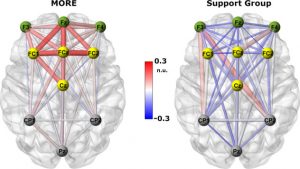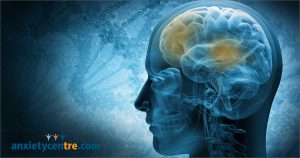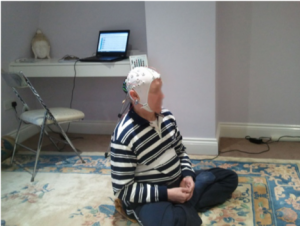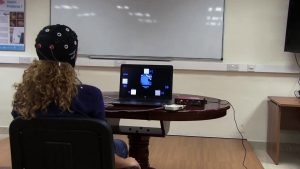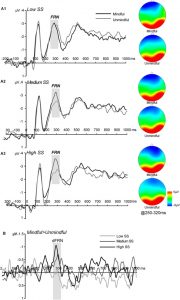Reduce Opioid Dosage in Chronic Pain Patients with Mindfulness
By John M. de Castro, Ph.D.
“It’s clear that when it comes to tackling pain, it takes all of the tools in the toolkit. And when it comes to opioids, the approach needn’t be all or nothing. . . the combination of medicine plus mind-body therapies works best.” – Allison Aubrey
We all have to deal with pain. It’s inevitable, but hopefully it’s mild and short lived. For a wide swath of humanity, however, pain is a constant in their lives. At least 100 million adult Americans have chronic pain conditions. The most common treatment for chronic pain is drugs. These include over-the-counter analgesics and opioids. But opioids are dangerous and highly addictive. Prescription opioid overdoses kill more than 14,000 people annually. So, there is a great need to find safe and effective ways to improve the individual’s ability to cope with the pain. There is an accumulating volume of research findings that demonstrate that mindfulness practices, in general, are effective in treating pain and reducing opioid use. How mindfulness works to produce these benefits is not known.
In today’s Research News article “Endogenous theta stimulation during meditation predicts reduced opioid dosing following treatment with Mindfulness-Oriented Recovery Enhancement.” (See summary below or view the full text of the study at: https://www.ncbi.nlm.nih.gov/pmc/articles/PMC8026958/ ) Hudak and colleagues recruited veterans with chronic pain and at least 30 days of opioid use and randomly assigned them to receive 8 weekly 2-hour sessions of either supportive group psychotherapy or Mindfulness-Oriented Recovery Enhancement (MORE) involving mindful breathing and body scan meditations, cognitive reappraisal to decrease negative emotions and craving, and savoring to augment natural reward processing and positive emotion. All participants completed a lab-based mindfulness session while simultaneously having their Electroencephalogram (EEG) recorded. During the programs and for 4 months after they reported their daily opioid use.
They found in comparison to baseline and the supportive group psychotherapy group that during the meditation the Mindfulness-Oriented Recovery Enhancement (MORE) group had significantly greater power in the EEG of the frontal cortex in the alpha (9-13 cycles per second) and theta (4-8 cycles per second) bands and also theta spectral coherence. They also found that the MORE group had significantly greater reductions in opioid use over the treatment period. In addition. They found that the greater the increase in theta band power in the EEG the greater the reduction in opioid use and this continued for 4 months after the program. Finally, they found that MORE was associated with reduced opioid use both directly and also indirectly by being associated with increased frontal theta power.
These findings suggest that Mindfulness-Oriented Recovery Enhancement (MORE) is effective in reducing opioid dosage in chronic pain patients. This is in line with previous findings that mindfulness training produces reductions in opioid dependence. Mindfulness training has also been shown to alter brain activity and the present findings indicate that theta power in the frontal lobe is a marker of these changes. Finally, the results suggest that MORE directly reduces opioid dependence and at the same time increase brain activity which is associated with further reductions in opioid use.
So, reduce opioid dosage in chronic pain patients with mindfulness.
“We also teach people how to use mindfulness to reclaim a sense of healthy pleasures, joy, and meaning in life, in spite of pain.” – Eric Garland
CMCS – Center for Mindfulness and Contemplative Studies
This and other Contemplative Studies posts are also available on Google+ https://plus.google.com/106784388191201299496/posts and on Twitter @MindfulResearch
Study Summary
Hudak, J., Hanley, A. W., Marchand, W. R., Nakamura, Y., Yabko, B., & Garland, E. L. (2021). Endogenous theta stimulation during meditation predicts reduced opioid dosing following treatment with Mindfulness-Oriented Recovery Enhancement. Neuropsychopharmacology : official publication of the American College of Neuropsychopharmacology, 46(4), 836–843. https://doi.org/10.1038/s41386-020-00831-4
Abstract
Veterans experience chronic pain at greater rates than the rest of society and are more likely to receive long-term opioid therapy (LTOT), which, at high doses, is theorized to induce maladaptive neuroplastic changes that attenuate self-regulatory capacity and exacerbate opioid dose escalation. Mindfulness meditation has been shown to modulate frontal midline theta (FMT) and alpha oscillations that are linked with marked alterations in self-referential processing. These adaptive neural oscillatory changes may promote reduced opioid use and remediate the neural dysfunction occasioned by LTOT. In this study, we used electroencephalography (EEG) to assess the effects of a mindfulness-based, cognitive training intervention for opioid misuse, Mindfulness-Oriented Recovery Enhancement (MORE), on alpha and theta power and FMT coherence during meditation. We then examined whether these neural effects were associated with reduced opioid dosing and changes in self-referential processing. Before and after 8 weeks of MORE or a supportive psychotherapy control, veterans receiving LTOT (N = 62) practiced mindfulness meditation while EEG was recorded. Participants treated with MORE demonstrated significantly increased alpha and theta power (with larger theta power effect sizes) as well as increased FMT coherence relative to those in the control condition—neural changes that were associated with altered self-referential processing. Crucially, MORE significantly reduced opioid dose over time, and this dose reduction was partially statistically mediated by changes in frontal theta power. Study results suggest that mindfulness meditation practice may produce endogenous theta stimulation in the prefrontal cortex, thereby enhancing inhibitory control over opioid dose escalation behaviors.
https://www.ncbi.nlm.nih.gov/pmc/articles/PMC8026958/
